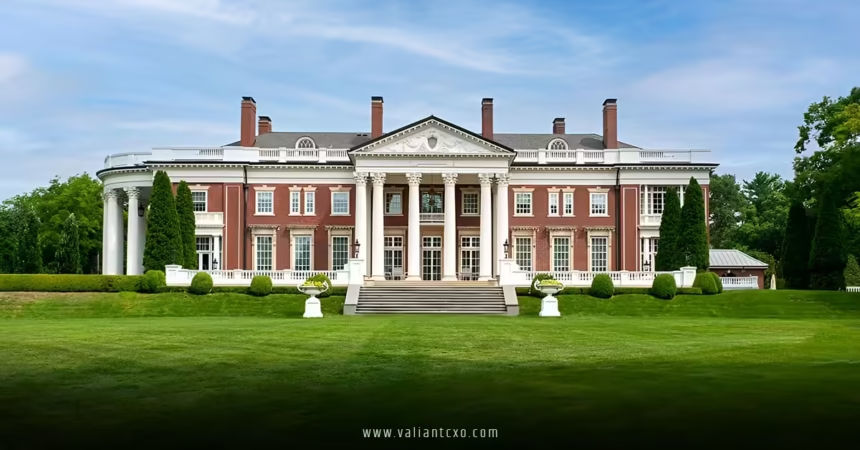History of Winfield House US ambassador residence London begins with a tale that’s as fascinating as a hidden gem in one of London’s grandest parks. Have you ever wondered how a lavish mansion in the heart of Regent’s Park became the go-to home for America’s top diplomat in the UK? Well, buckle up because we’re diving into this story like explorers uncovering a forgotten treasure. This iconic property isn’t just bricks and mortar; it’s a living piece of transatlantic history, blending British elegance with American flair.
Picture this: back in the early 19th century, London’s landscape was transforming rapidly. Regent’s Park, once royal hunting grounds under King Henry VIII, was being reimagined by visionary architect John Nash. Nash dreamed big—he planned for 56 luxurious villas dotted around a zoo and lush gardens. But hey, dreams don’t always pan out perfectly; only eight villas ever saw the light of day due to skyrocketing costs. Among them stood Hertford Villa, the crown jewel, built in 1825 for Francis Charles Seymour-Conway, the third Marquess of Hertford. This Italianate beauty, designed by Decimus Burton, wasn’t your average home—it was a party palace, complete with a fancy “tent room” for grand receptions.
As we trace the history of Winfield House US ambassador residence London, it’s clear that Hertford Villa set the stage for luxury. The Marquess spared no expense, even installing a quirky clock featuring life-size figures of Gog and Magog, salvaged from a demolished church. Can you imagine those giants chiming the hours? It was like having a piece of medieval folklore right in your backyard. Over the years, the villa changed hands and names, eventually becoming St. Dunstan’s Villa in honor of that very clock and its church origins.
Early Transformations in the History of Winfield House US Ambassador Residence London
Fast forward to the late 19th and early 20th centuries, and St. Dunstan’s Villa had seen better days. Owned by the likes of newspaper magnate Lord Rothermere, it fell into disrepair. But here’s where the history of Winfield House US ambassador residence London takes a heroic turn—during World War I, American financier Otto Kahn leased it and turned it into a haven for blinded servicemen. This act of kindness birthed the charity St. Dunstan’s (now Blind Veterans UK), adding a layer of compassion to the property’s legacy. Isn’t it amazing how a building can shift from opulent parties to wartime sanctuary?
By the 1930s, fate struck again. A devastating fire in 1936 gutted parts of the villa, leaving it in ruins. Enter Barbara Hutton, the glamorous Woolworth heiress dubbed the “poor little rich girl.” At just 23, married to Count Kurt Haugwitz-Reventlow, she snapped up the property in 1935, fearing for her son’s safety amid rising European tensions. Hutton didn’t just patch it up; she demolished the old structure and commissioned a brand-new Neo-Georgian mansion. Working with architect Leonard Rome Guthrie, she poured her fortune into creating something timeless.
Why name it Winfield House? Simple—it’s a nod to her grandfather, Frank Winfield Woolworth, the retail tycoon behind the five-and-dime empire. Construction zipped along, wrapping up in just 15 months by January 1938. Hutton even planted thousands of trees, turning the 12-acre grounds into a verdant paradise. In the history of Winfield House US ambassador residence London, this era feels like a fairy tale, with Hutton as the benevolent princess reshaping her kingdom.
World War II and the History of Winfield House US Ambassador Residence London
War clouds gathered in 1939, and Hutton, freshly divorced, fled to California with her son. Winfield House didn’t sit idle—it was commandeered by the Royal Air Force as a barrage balloon unit and later an officers’ club. Imagine the grounds, once manicured for high society, now hosting football matches by a team cheekily called “Barbara’s Own.” But war is ruthless; German bombs damaged the house, boarding up windows and scarring the elegance.
During this turbulent chapter in the history of Winfield House US ambassador residence London, a Hollywood touch appeared. Hutton’s then-husband, actor Cary Grant, visited while serving in the RAF. It’s like a movie script—glamour amid grit. Post-war, in 1945, Hutton returned to assess the wreckage. Heartbroken by the state of her beloved home, she made a stunning decision: donate it to the United States government.
The Gift That Shaped the Modern History of Winfield House US Ambassador Residence London
President Harry Truman personally accepted Hutton’s “generous and patriotic offer” in a letter, sealing the deal for a symbolic one dollar. By 1955, after repairs and a stint as a U.S. Air Force officers’ club, Winfield House officially became the ambassador’s residence, replacing the outdated 14 Prince’s Gate due to security woes. The first to call it home? Ambassador Winthrop Aldrich.
This pivot marks a pivotal moment in the history of Winfield House US ambassador residence London. No longer a private estate, it evolved into a diplomatic powerhouse, symbolizing the special relationship between the US and UK. Ambassadors have personalized it over decades, but a major glow-up came under Walter H. Annenberg and his wife in 1969. They enlisted decorator William Haines, a former silent film star, to revamp the interiors. Think 18th-century Chinese wallpaper in the Garden Room—pure opulence that sticks around today.
Architectural Wonders in the History of Winfield House US Ambassador Residence London
Let’s geek out on the design. Winfield House screams Neo-Georgian charm with its red brick facade, inspired by grand English townhouses. Grade II listed by Historic England, it’s hailed as an “exceptional ambassador’s residence” packed with noteworthy features. Inside, rooms blend classic and modern—think elegant ballrooms for state dinners alongside cozy family quarters.
The history of Winfield House US ambassador residence London wouldn’t be complete without its gardens. Spanning 12 acres, they’re a horticultural haven, second only to Buckingham Palace’s. Head Gardener Stephen Crisp has tended them since 1987, transforming neglected patches into masterpieces. You’ve got the Parterre Garden with a bronze statue of Hutton herself, a Summer Garden inspired by Frank Lloyd Wright, and even a Route 66-themed drive for that American twist. Pathways wind through sculptures, vegetable plots, and a tennis court—it’s like a private park where diplomacy blooms.
Star-Studded Moments: Famous Visitors in the History of Winfield House US Ambassador Residence London
Oh, the tales these walls could tell! The history of Winfield House US ambassador residence London is dotted with A-list encounters. Queen Elizabeth II dined here multiple times, including a memorable 2011 banquet with President Barack Obama, Michelle Obama, and Prince Philip. Princess Diana brought young Princes William and Harry for visits, adding royal sparkle.
Presidents love it too—think George W. Bush posing with Mikhail Gorbachev for an iconic photo, or Donald Trump staying during London trips. It’s hosted fashion weeks, with Vogue’s Alexandra Shulman co-hosting parties where Spice Girls mingled. Even during Ambassador Robert Tuttle’s tenure, modern art displays turned it into a cultural hub. Rhetorically, isn’t it wild how one house bridges worlds, from wartime barracks to presidential playgrounds?
Winfield House Today: Continuing the Legacy in the History of Winfield House US Ambassador Residence London
In modern times, Winfield House remains a fortress of diplomacy, surrounded by trees for privacy and security. It’s on the U.S. Secretary of State’s Register of Culturally Significant Property, underscoring its importance. Current ambassadors and their families live here, hosting events that strengthen US-UK bonds. The gardens use eco-friendly practices like composting, showing a commitment to sustainability.
As we explore the history of Winfield House US ambassador residence London, it’s evident this place is more than a residence—it’s a metaphor for resilience, like a phoenix rising from fire and war. Thick hedges hide it from public view, but its influence echoes globally.
Subtleties of Maintenance and Preservation
Maintaining such grandeur isn’t easy. The greenhouses churn out thousands of plants yearly, with minimal staff using smart techniques. Renovations preserve the Annenbergs’ vision, ensuring the house stays timeless.
Cultural Significance
Winfield House pops up in pop culture too, like in Netflix’s “The Diplomat,” highlighting its intrigue. It’s a reminder of how history of Winfield House US ambassador residence London weaves into contemporary narratives.
Conclusion
Wrapping up our journey through the history of Winfield House US ambassador residence London, we’ve seen it evolve from a Regency villa to a wartime survivor and diplomatic icon. From Barbara Hutton’s generous gift to hosting world leaders, this mansion embodies enduring friendship across the Atlantic. If you’re inspired, why not dive deeper into London’s hidden histories? Who knows—you might uncover your own stories. Remember, places like Winfield House teach us that legacy isn’t just about the past; it’s about shaping tomorrow.
FAQs
What is the origin of the name in the history of Winfield House US ambassador residence London?
The name honors Barbara Hutton’s grandfather, Frank Winfield Woolworth, the retail magnate who built her family’s fortune.
How did Winfield House become the US ambassador’s residence?
In the history of Winfield House US ambassador residence London, Barbara Hutton donated it to the US government for $1 after World War II damage, and it officially started serving in 1955.
What role did World War II play in the history of Winfield House US ambassador residence London?
During the war, it was used by the RAF, suffered bomb damage, and even hosted Cary Grant, marking a dramatic shift from luxury to utility.
Who were some famous visitors to Winfield House?
Exploring the history of Winfield House US ambassador residence London reveals guests like Queen Elizabeth II, Barack Obama, and Mikhail Gorbachev, making it a hotspot for global figures.
What makes the gardens special in the history of Winfield House US ambassador residence London?
The 12-acre gardens, second only to Buckingham Palace’s, feature sculptures, parterres, and sustainable designs, evolving from Hutton’s plantings to modern eco-friendly havens.
For More Updates !! : valiantcxo.com


